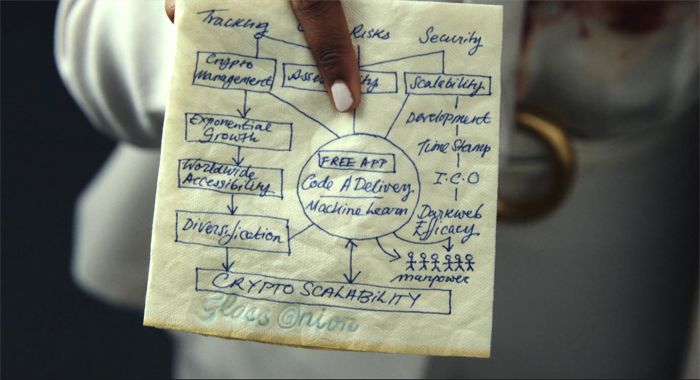
GUEST POST from Rachel Audige
You know that extra buzz of care you feel for people like you? That might be you caught up in like-mindedness bias. We have a tendency to seek out people like us and ideas like our own. That may be just fine but let’s not kid ourselves that it fosters new thinking!
It’s hard not to enjoy kindred spirits. There is something very comforting about spending time with people who share similar values and desires, but I tire of meetings and work situations where people speak of the pleasure of being with folk like them:
“It is so good to be amongst like-minded people,” I heard in a local business meeting that I attend to be challenged.
“An event for the like-minded,” is supposed to attract us to an innovation event.
“Feeling like meeting like-minded women over lunch?” says an invitation I receive in my inbox.
We welcome people, but the sub-text is that they need to ‘be like us’. “There is nothing wrong with you as long as you look like, think like, act like, lead like, advance like, decide like, keep time like, create like, socialize like and consume like us,” writes Nancy Kline in More Time To Think.
It is a bias at large in the workplace and, indeed, in most other places. We just seem to want to self-replicate.
More pervasively, even social media algorithms nourish this thinking and feedback to us only the ideas and world views that we have ‘liked’. The result is that our own narrow views are played back to us in a mind-narrowing echo chamber. This is not an innovative ecosystem, it’s more like an echo- system where our own thoughts and ideas are reflected back at us.
This is not an innovative ecosystem, it’s more like an echo- system where our own thoughts and ideas are reflected back at us.
I believe this obsession with like-mindedness stems from a range of factors including:
▶ A fear of being different. Our desire to fit in and belong is usually greater than our willingness to stand out.
▶ A false idea of mateship that tells us we can only be ‘mates’ if we get on. We see this a lot in countries like Australia and New Zealand.
▶ Avoidance of conflict. In organizations where we are not encouraged to challenge the leadership or each other, some will choose to behave as though they agree to avoid any negative consequences.
▶ Fear of rejection. This is the people-pleasing side where people show agreement whether they agree or not.
▶ Need for Approval. This is very apparent in many large corporations and can lead to a passive/defensive culture in an organization. It may be amplified by the fact that for many the HiPPO (the bias where we defer to the Highest Paid Person’s Opinion) is offshore and there is a sense that we need to walk the corporate line.
▶ And lastly, what Nancy Kline would see as an untrue limiting assumption, that someone else’s divergent thinking ‘does not count’; a sense that we are—or our thinking is—superior.
“When we all think alike, there is little danger of innovation” — Edward Abbey
I don’t believe that like-mindedness is conducive to innovative thinking or the best decision making. I have sat on a board where the CEO and Chair were so close they did not call each other out on important matters. I have also been in a team where the Head of Sales and Head of Marketing were being told they should agree of things when I was convinced that each of them was likely to be more effective if they represented their divergent take on the customer, strategy and long-term versus short-term priorities.
A CREATIVE CULL
The like-mindedness bias not only impoverishes thinking but excludes those who are ‘un-like’ us in a variety of ways. Some expressions of this like-mindedness bias and its consequences that I have witnessed with regards to creative thinking are:
▶ Groups that place too much value on similarity and getting on. As a result, they are less likely to bring divergent thinking into the room. They may then consciously — or unthinkingly — not invite those who we believe are not ‘like them’. I have seen this lead to ideas that are less rich and less inclusive of a diverse range of views where I had to speak up for the absent (needless to say, I also had blinkers and would have left people out).
▶ Countless idea generation sessions where we have not consciously asked the question: who does this idea exclude? We tend to be very good at looking for benefits and challenges but many workshops have fallen into the trap of the mythical notion of ‘one size fits all’. This could exclude any number of people.
▶ I recall a meeting where a panel was seeking creative ideas around addressing the disproportionately low number of women positions of power in Australian businesses. Incredibly, only two men were in a room of over 100 women. This was unlikely to bring the most creative ideas or engage those that needed to be part of the conversation.
▶ Conversely, I have run a roundtable explicitly for people living with disability and upset a person who was hard of hearing and was seated at the back of the room, unable to lipread. Albeit unintentional, we need to watch out for ‘micro-aggressors’; those (seemingly) little things that remind people that the world wasn’t built for them. We talk a lot about ‘scalability’ in innovation. But how can we see something as truly scalable if we are leaving out about 15% of the population?
Most of us have been in a meeting — creative or otherwise — where the unwritten rule involves sacrificing more challenging, disruptive ideas for consensus and groupthink. In a creative session, if my goal is to get on with another person, I am unlikely to improve on their ideas. I am also unlikely to contradict them. This leads to a lowest common denominator effect whereby we settle on what is agreeable to all.
If we are not pushing each other for better, we are likely to stop at safe, possibly ‘vanilla’ concepts. This erodes our creative edge and our point of difference. Nancy Kline clearly sees the danger: “We worship at the altar of homogeneity. Actually, we sacrifice there… Homogeneity sounds so nice. Same, comfortable, familiar, predictable. But it is ruthless. And it infects even our conception of how to slay it.”
The most helpful way of exploring the many negatives of the like-mindedness bias and its impact on innovation is to highlight the value of its opposite…
DIVERSITY | DIVERGENT THINKING | INCLUSION and UNIVERSAL DESIGN
One of the most powerful measures to keep most biases in check is to invite diversity, divergent thinking and actively foster inclusion.
Mid-Covid-19 discussions in Australia, I was delighted to hear Chief Medical Officer Brendan Murphy’s response to a question about whether he agreed with the different stakeholders involved in making wellbeing decisions. He replied that it was preferable for them not to agree and that their decisions would be better for it.
Diversity is manifesting an understanding that each individual is unique and recognising individual differences. These differences may be in ethnicity, gender, sexual orientation, socio-economic status, age, physical abilities, religious beliefs, political beliefs or other ideologies. As Kline states: “The mind works best in the presence of reality. Reality is Diverse.”
‘Diversity’ has been part of the business vernacular for years now. Diversity is the mix. What matters is how we make this mix work once we combine different backgrounds, vocabularies, paradigms and processes. That’s inclusion. Not getting this right can whitewash creativity and, potentially, undermine the inclusiveness of any creative output.
Dr Jennifer Whelan, founder of Psynapse, offers a simple illustration of why diversity is preferable. Whelan describes two rooms. In the first room, you see people just like you; people who share the same language, skin colour, gender and even background. You can relax, these are ‘your kind of people’. You can build rapport, make assumptions, enjoy high levels of certainty. It feels efficient.
But there are risks to this, warns Whelan: “Too much agreement means we don’t consider alternative solutions, or discuss a broader range of ideas. We are at risk of groupthink and biases because we don’t have a fresh set of eyes on how we’re thinking. We don’t feel challenged so we go with the easier option and stick with tried and tested solutions. While some of the routine things we do at work might not suffer, when it comes to some of the more challenging things, this room acts as an echo chamber.”
In the second, you open the door to a room full of people who are both different to you and to each other. In this room, you’ll have to bring your A-game. You’ll need to listen more attentively and be better prepared.
“This second room doesn’t feel as comfortable as the first room. You have to work a lot harder and the outcome might not be as predictable,” says Whelan. However, this room has many potential upsides. This is likely to be a space which is more conducive to creativity. A place where more varied ideas are aired, less shortcuts are made and people are more likely to notice what might otherwise be overlooked.
Room one is more comfortable but it is less well equipped for creative thinking and is more prone to biases, errors and assumptions.
“Getting more comfortable in room two, the diverse room, is the goal of inclusion and, without inclusion, room two can risk higher levels of conflict. Different perspectives and ideas aren’t explored without an open, curious mind, so the team’s diversity can go to waste,” says Whelan.
So, what can we do to counter the like-mindedness bias to disinvest in sameness and think more inclusively and creatively and ‘make the mix work’ in our innovation?
My experience of corporate innovation workshops and idea generation sessions is that we focus on desirability, feasibility and viability but forget to ask the question: Who am I excluding?
It strikes me that we need to overlay—or better, underpin— all our creative thinking and work on new product and service design, process enhancement by this consideration and constantly strive to iron out the kinks to make whatever we are creating as inclusive as possible.
We also need to include universal design principles in our idea generation criteria: is it equitable? Flexible? Simple and intuitive? Is information perceptible? Is there a tolerance for error? Does it require low physical effort? Is the size and space adequate for approach and use? Who might this idea exclude? If we want to dial up our creative outputs, we need more divergent inputs. We need to actively seek out or create places where we will encounter different-minded people; divergent thinking and diverse group identities.
As Brené Brown says: “Daring leaders fight for the inclusion of all people, opinions and perspectives because that makes us all better and stronger.
“That means having the courage to acknowledge our own privilege and staying open to learning about our biases and blind spots.”
NOTHING KEEPS BIAS IN CHECK LIKE INCLUSIVE DIVERSITY
Whatever we are creating, we shouldn’t be considering difference after the fact. Literally — and metaphorically — we need to come up with ideas, systems, processes, designs, websites, buildings…where each and every person can enter through the front door.
I work on a simple premise that innovation should be geared towards making our lives better. When this view is shared, diversity really needs to be front and centre of any initiative. Online and off, we need to follow the thinking of the likes of Todd Rose, co- founder and president of non-profit Project Variability, who challenges the ‘myth of the average’ and recommends that we ‘design to the edges’ and optimise our processes, structures, systems, products and communication for the full range of human characteristics, traits, abilities and interests.
I have always found that my ideas can be improved and sharpened by people who think differently. As long as I listen to those voices with respect and interest — and genuinely contemplate the ideas of others.
I am convinced that we think better and are more likely to look at things from more angles with different perspectives in the room. This is why the best idea generation happens with multidisciplinary, cross-functional, cross-ability groups.
I’m not scared of a ‘clashing’ of ideas and debate. It keeps me sharp and it keeps me grounded. It keeps complacency at bay. It leads to more meaningful outcomes. I am conscious that my comfort with conflict may be another person’s discomfort.
Even when I’m overly partial to an idea, I try to think inclusively and not defensively, I try to make a point of inviting diverse voices to pipe up. Being challenged is a necessary part of the creative process. We need to embrace the discomfort.
Whatever we are creating, we shouldn’t be considering difference after the fact. Literally — and metaphorically — we need to come up with ideas, systems, processes, designs, websites, buildings… where each and every person can enter through the front door.
If you are interested in overcoming biases to enhance your innovation effectiveness, check out: “UNBLINKERED: The quirky biases that get in the way of creative thinking…and how to bust them” at www.rachelaudige.com
 Sign up here to get Human-Centered Change & Innovation Weekly delivered to your inbox every week.
Sign up here to get Human-Centered Change & Innovation Weekly delivered to your inbox every week.

![]() Sign up here to join 17,000+ leaders getting Human-Centered Change & Innovation Weekly delivered to their inbox every week.
Sign up here to join 17,000+ leaders getting Human-Centered Change & Innovation Weekly delivered to their inbox every week.







